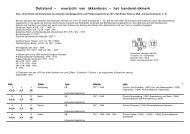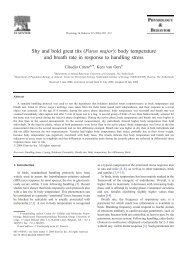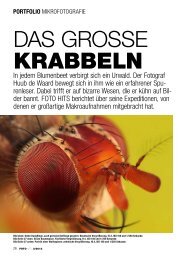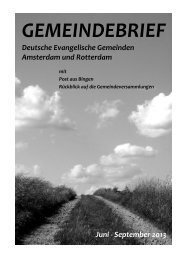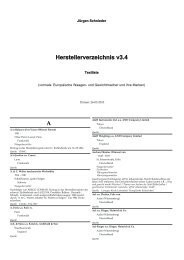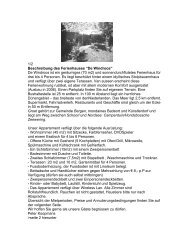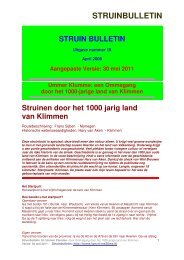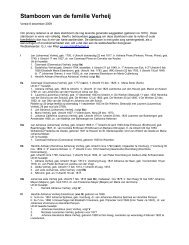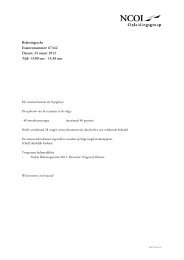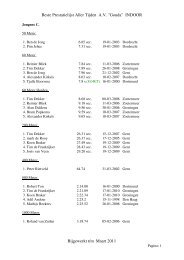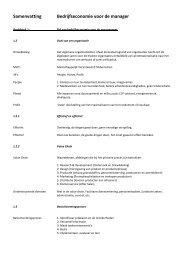The Makassar Malays - Cambridge Journals
The Makassar Malays - Cambridge Journals
The Makassar Malays - Cambridge Journals
Create successful ePaper yourself
Turn your PDF publications into a flip-book with our unique Google optimized e-Paper software.
400<br />
heather sutherland<br />
famous merchants of seventeenth-century <strong>Makassar</strong>. 10<br />
<strong>The</strong> first official settlement of the <strong>Malays</strong> in <strong>Makassar</strong> had been established in 1561, when the<br />
Malay skipper Anakoda Bonang (Datuk Maharaja Bonang) brought gifts of textiles and weapons to<br />
the ruler of Goa, Karaeng Tunipalangga. In exchange the <strong>Malays</strong> were granted land on which to<br />
settle and limited self-government. <strong>The</strong> Karaeng asked only who was to be included among the<br />
<strong>Malays</strong>.Anakoda Bonang replied that the term Malay covered all those who wore a sarong sash, such<br />
as men from Pahang, Patani, Champa, Minangkabau and Johor. 11<br />
Datuk Maharaja Bonang’s chief line of descent could be traced back to a Sayid (descendant of<br />
the Prophet) from Mekka, whose lineage ran down through the Malay centres of Aceh, Johor,<br />
Singapore and Patani, to a Wan Umar, who married a princess from Banjarmasin. <strong>The</strong>ir<br />
descendants spread to Sumbawa, Bima and throughout South Sulawesi. According to tradition it<br />
was also Datuk ri Bonang who invited a Minangkabau ulama to <strong>Makassar</strong>, who was responsible for<br />
the court’s Islamisation. 12 This must have enormously strengthened the prestige and influence of the<br />
<strong>Malays</strong>.<br />
<strong>The</strong> <strong>Malays</strong>’ position was further consolidated with the arrival in 1632 of a nobleman from<br />
Patani, Datuk Maharaja Lela; he was chosen as chief of the <strong>Makassar</strong> <strong>Malays</strong>. 13 By the midseventeenth<br />
century <strong>Malays</strong> were prominent in the life of the court. Ince Amin, a ‘Malay of<br />
<strong>Makassar</strong>ese descent’, was secretary to the ruler of Goa, and wrote a rhymed chronicle of the war<br />
between Goa and the VOC. This Sya’ir Perang Mengkasar gives many examples of the diplomatic<br />
and military activities of the <strong>Makassar</strong> <strong>Malays</strong>, and confirms VOC accounts of their mediating role.<br />
<strong>The</strong> Sya’ir also reveals Ince Amin’s familiarity with Islamic mysticism and Malay literature. As his<br />
editor Skinner observes, as royal secretary – a kind of resident intellectual - Ince Amin would have<br />
been expected to contribute to court culture. 14 In his Sya’ir Ince Amin celebrates the heroism of<br />
Datuk Maharaja Lela, as the <strong>Malays</strong>’ political and military leader. <strong>The</strong> Datuk’s descendants were to<br />
dominate the community for over 200 years, or, to adopt a slightly different perspective, those who<br />
later rose to power sought legitimation by establishing their connections to his lineage.<br />
Conquest and trade<br />
It was Datuk Maharaja Lela who led the Malay community through the traumatic period of<br />
the mid-seventeenth century. He pledged his support to the Goa ruler in the 1660-69 wars, which<br />
culminated in <strong>Makassar</strong>’s defeat by a Dutch-Bugis alliance, led by the VOC’s Admiral Speelman and<br />
the exiled Bone prince Arung Palakka. Ince Amin’s Sya’ir describes the fierce opposition of the local<br />
10 VOC 1224 f. 433. This contemporary account seems to make use of a handwritten Romanised chronicle, Sedjarah<br />
Melajoe di <strong>Makassar</strong> (History of the <strong>Malays</strong> in <strong>Makassar</strong>), once kept at the Yayasan Sulawesi (no. 139); see Denys Lombard<br />
and Claudine Salmon,‘Islam and Chineseness’, Indonesia, 57 (1993): 115-31.<br />
11 Abdurrahim, ‘Kedatangan Orang Melaju di <strong>Makassar</strong>’, in Kenallah Sulawesi Selatan. ed. H. D. Mangemba (Jakarta:<br />
Timun Mas, 1956), pp. 143-6; G.J.Wolhoff and Abdurrahim, Sedjarah Goa (<strong>Makassar</strong>: Jajasan Kebudajaan Sulawesi Selatan<br />
& Tenggara, 1960); Cummings, ‘Melaka Malay Diaspora’; Reid, ‘Pluralism and Progress’, p. 66; ‘De Kapitein Melajoe te<br />
<strong>Makassar</strong>’, Adatrechtbundels XXXI: Selebes (<strong>The</strong> Hague: 1929), pp. 110-12; Kerukunan Keluarga Indonesia Keturunan<br />
Melayu (KKIKM), Sejarah Keturunan Indonesia Melayu, (<strong>Makassar</strong>?: unpublished photocopy, c. 1987), p. 3.<br />
12 Noorduyn, ‘Islamisering van <strong>Makassar</strong>’; KKIKM, Sejarah, p. 3; Cummings,‘Melaka Malay Diaspora’, p. 111.<br />
13 ‘De Kapitein Melajoe’; KKIKM, Sejarah; Cummings, ‘Melaka Malay Diaspora’; while Datuk Maharaja Lela is<br />
described as coming from Patani, it is worth noting that the Dutch Admiral Speelman, who knew him personally, described<br />
Ince Muda, a Minangkabau, as ‘coming from the same village as Radja Lella’ (Speelman ‘Notitie’, Aanwinsten eerste<br />
Afdeling, ARA, 1928, nrs.10 and 11, f. 744). This is a manuscript copy of the encyclopaedic memorandum submitted to the<br />
VOC by Admiral Cornelis Speelman after the conquest of Goa; see Noorduyn,‘Handelsrelaties’ for more details.<br />
14 C. Skinner, Sja’ir Perang Mengkasar (<strong>The</strong> Rhymed Chronicle of the Macassar War) by Entji’ Amin (<strong>The</strong> Hague:<br />
Martinus Nijhoff, 1963); on Ince Amin, see p. 91. <strong>The</strong> prefix variously spelled ‘Ince’,‘Intje’,‘Encik’,‘Enchik’,‘Entji’, etc. was<br />
used to designate <strong>Malays</strong> (and sometimes peranakan Chinese).





